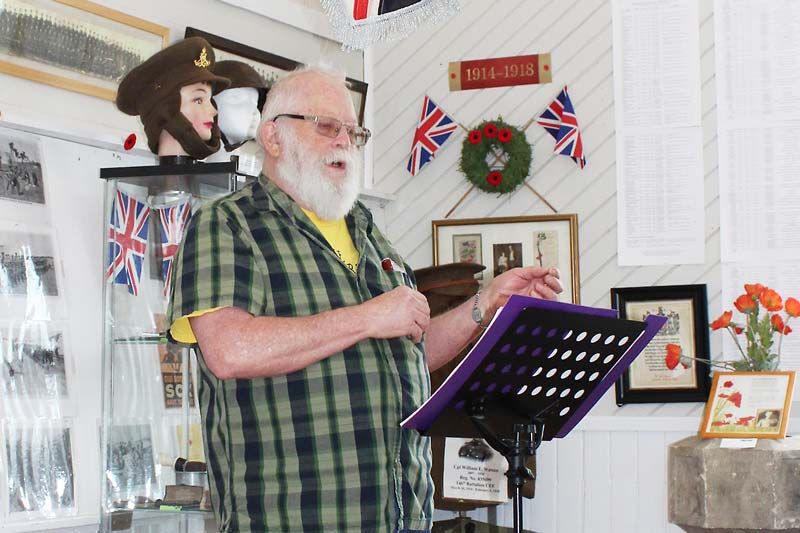Craig Bakay | Nov 20, 2019
Last Monday marked a milestone of sorts for the South Frontenac Museum in Hartington. It was the first time the museum hosted a visiting historical society for a talk on two of the museum’s most prominent collections and displays — the 146th “Overseas” Battalion and First World War Nurses.
The visitors on this day were the Cloyne and District Historical Society and about a dozen of them made the trek south to hear what former Canadian Army Sgt. Doug Lovegrove and his wife Debbie had to say.
“We like to support other historical societies,” said Red Skipper of the Cloyne group. “We go to a lot of museums.”
“We’ve even been to the NORAD mountain,” said Gordon McCulloch. “It covers two football fields.”
The visitors weren’t disappointed as the Lovegroves laid out the history of WWI soldiers in Frontenac County.
“One thousand and two men joined the 146th,” Doug said. “Of that 561 men went overseas and 127 were killed in action.
“There were 39 officers of which 26 went overseas and two were killed in action.”
He said that of the 55 battles Canadians were involved in, the 146th was in 41 of them.
He then went on to detail the recruiting process in the area.
“The recruiters came up from Kingston to Harrowsmith and took the stage to Sydenham,” he said. “They recruited five men there.
“They did a lot better in Verona where they recruited 53.”
He said a lot of the recruits were farmers, who made about 50 cents a day. Since the army paid $1 a day plus 10 cents in overseas allowance and provided $20 a month for families, it was a fairly easy sell.
“A recruit had to be taller than 5 feet, 3 inches tall and be between 18 and 38, (although he could not be sent overseas until age 19),” he said. “In August of 1918, the Military Service Act changed enlistment ages to between the ages of 20 and 45.”
Lovegrove said that in his researching the 146th, he came across some rather interesting information about Canadian nurses in WWI but since there was so much to be researched with the 146th, he couldn’t do it justice. So, he turned the nurses section over to his wife Debbie, herself a M/Cpl CD1 (ret).
“There were 2,845 nurses enlisted in the Canadian Army Medical Corps,” she said. “A nurse was commissioned as a lieutenant and a matron as a captain.
“And they received the same pay as their male counterparts.”
She said 1,886 of those served overseas and 62 were killed in action.
She said the work in field hospitals and convalescent homes was traumatic, with lice and rats everywhere.
“But it also gave the nurses who went overseas a deep sense of satisfaction and accomplishment at a time when women’s roles were firmly planted in the domestic sphere,” she said. “They made significant and very public contributions to the war effort.”
One of the most interesting statistics she presented was the stature of some of these nurses.
“The smallest was 4 feet tall, 120 pounds,” she said. “The lightest was 5’4”, 89 pounds; the tallest was 5’11’’ and 130 pounds and the heaviest was 5’5 ½ ” and 220 pounds.”
More Stories
- Harrowsmith Public School and the Magic of Theatre
- You’re a Good Man Charlie Brown – a school wide effort at SHS
- Leadership From Within
- New Bulk Water Station in Sydenham
- Frontenac County Council looks at Healthcare Recruitment
- Good Turn Out Maple Fest Despite Rain
- Future looking brighter for Denbigh Fire Department says Chief
- Local Favourites featured at 2nd Annual SF Music Festival
- Perth Festival of the Maples, Saturday, April 27
- South Frontenac Council

